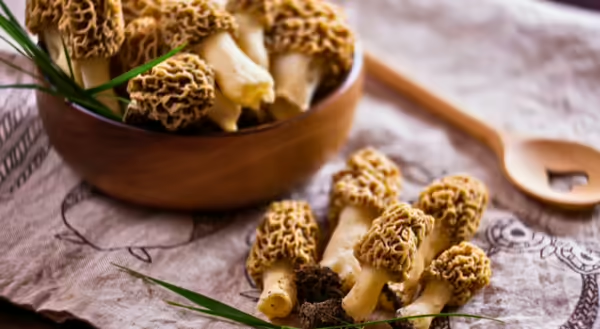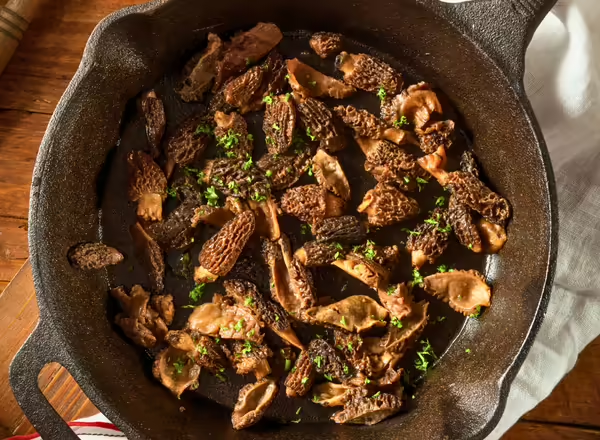
Morels are the mushroom hunter's prey. Depending on the weather and location, the first Illinois morels of the season may begin to appear in late March to early April and generally ends in May. Morels are difficult to cultivate, thus are generally gathered in the wild rather than farmed. It may be rare to find them in stores or even on a restaurant menu, and when you do, be prepared to pay a hefty price. A local grocery co-op is selling them for $50 per pound, which is actually not a bad rate.
Morels have a distinct honeycomb cap but hollow stem and top. Don't confuse true morels with false morels, which have a resemblance but may be poisonous and deadly. As the saying goes, "if the stalk isn't hollow don't swallow!" Take along a reputable field guide, and do the proper research before eating wild mushrooms.
Keep unwashed morels in the refrigerator for 1-2 days. Cleaning morels can be quite tedious as dirt and insects can be found in the cracks and crevices. Soak them in lukewarm salted water for 30 minutes changing the water a few times. Avoid oversoaking as it can dilute their flavor. Morels have a meaty texture and an earthy, nutty flavor. They're typically enjoyed on their own, sautéed in butter, but they also go nicely in pasta dishes. If you can't enjoy morels right away, consider drying or freezing them. Dry sliced or whole morels in a dehydrator for 8-10 hours or until brittle. Rehydrate in simmering water for 20-30 minutes. Freeze by blanching for 3 minutes in boiling water with one teaspoon lemon juice per pint of water; cool, drain and package leaving ½-inch headspace. Morels are naturally nutritious and include iron, B-vitamins and antioxidants. They're also rich in vitamin D, which is rare for foods to be a natural source of this sunshine vitamin. If you're lucky enough to get your hands on them, savor the morel flavor!
About the Author
Jenna Smith is a Nutrition and Wellness Educator with University of Illinois Extension, serving Livingston, McLean, and Woodford Counties. Smith uses her experience as a registered dietitian nutritionist to deliver impactful information and cutting-edge programs to Livingston, McLean, and Woodford Counties and beyond.
